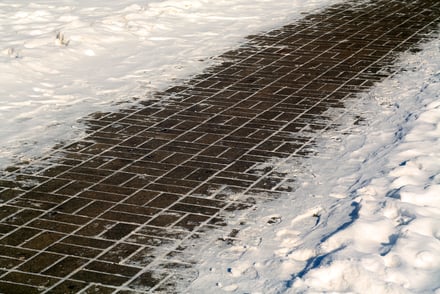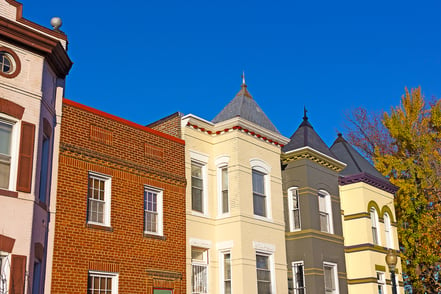The bricks that make up your old home’s façade are durable enough to last for about a century. However, the mortar that holds them together is another story. It will most likely have to be replaced several times during the life of the walls to prevent damage. This common repair is called tuckpointing. It must be done correctly to preserve the life of your home's facade.
Unclear about what's involved? You're not alone. Even the savviest owners of historic brick homes may not feel confident about what’s required in a tuckpointing job. There’s so much more involved than replacing mortar.
What's Involved In a Tuckpointing Job
Here’s what you should expect from the right masonry contractor:
- Consultation with free evaluation and estimate. Regular updates and information about all aspects of the process.
- Comprehensive tuckpointing of all exterior walls, regardless of their appearance or condition, rather than spot tuckpointing.
- Scaffolding erected per OSHA regulations to ensure that workers can access the entire building; ladders are inadequate and potentially dangerous.
- Windows covered with heavy-duty plastic taped into place. Windows of adjacent houses can also be covered with permission from neighbors.
- A highly skilled crew of trained masons; even a small DC row house requires a minimum crew of three workers.
- Hand scraping of all mortar joints — whether untouched or filled with cement — to a minimum depth of 1⁄2 inch. • Use of lime mortar consistent in molecular content and density.
- Tuckpointed mortar joints should be struck with a tool creating a slight concave recess in the joint to prevent water penetration and staining on the brick wall.
- Daily clean up and a complete site cleanup completed with the removal of all construction materials upon project conclusion.
- Thorough cleaning of the newly tuckpointed wall to remove dirt, staining, and any residual mortar left on the brick faces during the work.
Masonry Contractors in DC
After decades of exposure, the mortar joints between the bricks on historic homes will begin to fail. Your old brick home may be showing the signs of deterioration right now. When you spot the signs of trouble, start by finding a contractor for an onsite evaluation. Not all masonry contractors are equally experienced in “reading an old building, ”so your selection is important.
- Look for a company that has experience with historic brick buildings.
- Ask neighbors for recommendations.
- Check out customer reviews of each contractor.
Your chosen contractor will perform an evaluation of your building's condition and make recommendations for the restoration project. As a homeowner and customer, you should be informed and educated at each step. Use the checklist to ask questions and consider the answers.
Renaissance Development, a leader in brick restoration and historic preservation, specializes in the repair and restoration of historic DC brick buildings. We love old homes and are committed to preserving their historic charm and value. If your renovation plan includes masonry or brick repair, contact us for a free site visit and project quote.
May 16, 2019 1:43:10 PM



